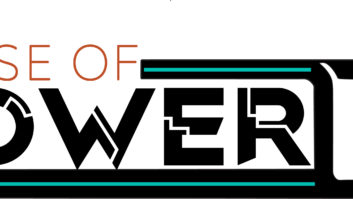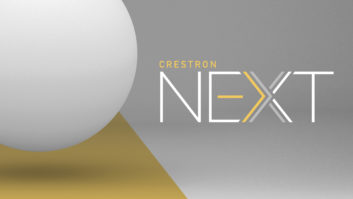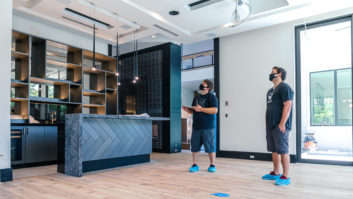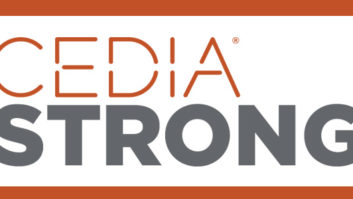On January 11, Residential Systems hosted an industry forum at its New York City headquarters to discuss current challenges and future opportunities of the home integration market. Participants included Walt Rising, owner of Next Generation Electronics, an innovative custom integration firm in Traverse City, Michigan; Al Lizza, director of marketing for Honeywell Security and Custom Electronics; Andrew Goldfinch, inventor of the A-BUS multi-room audio standard, RS editor Jeremy Glowacki and managing editor Margot Douaihy. While topics varied from participant to participant during this discussion, all shared a belief that the potential of the residential systems markets was still untapped.
Jeremy Glowacki: To kick things off, what are your customerswhether theyre builders, integrators or consumerslooking for these days in terms of technology?
Walt Rising: There is a broad spectrum and it runs from soup to nuts. The builders that are, in some cases, building beautiful homes want nothing to do with anything technological because they have this assumed liability for the house that theyre building. And if something doesnt work, someone is going to call them and they dont know anything about it; it scares them to death. Then on the other side they progressively embrace their new electronic home lifestyle design concept. I think thats a critical concept for us to get into the minds of the consumer through the builder, the architect, the lighting designer, the electrician all of these different avenues.
Andrew Goldfinch: Were trying to provide a clear picture, because the audio choices in the past have been far too complicated. If you look at it like a pie, theres the security slice, the audio slice, the video slice and the data slice. All the customer wants to do is buy the pie. Our integrators are looking for solutions that are simple that deliver true, reliable results that are not too complicated for their customers. Were in the simplicity business, and were solutions based. Thats the main thing that I find so important.
Al Lizza: I really think this is an area where we can help, because we have close to 10,000 dealers and integrators. When you deal with the company as a whole, no matter where they are in that food chain, when it all lets out there are really only three things that theyre interested in. That is lower my total cost of install (and theres a lot of stuff that goes along with that), give me some way to differentiate myself from the rest of the world and theyre looking for ways to upsell. Its really a balancing act of all of those, and the emphasis that various dealers put on them kind of depends on where they are in the food chain.
Rising: You guys supply wonderful products, but very little emphasis is being focused on the grass-roots level on training those people on our level, how to sell it.
Goldfinch: Its not just that. Weve got to train them on how to manage, because guys on both ends of the market are not making enough money. A lot of it comes down to lack of management, and its the creativity thats built into most people in our industry and the knack of the small businessman to go deliver lots and not think about the cost of delivering.
Lizza: What youre saying really plays into some of our decisions about what kind of technology we choose to integrate. The vast majority of base is the traditional security dealer, low-voltage. They own the perimeter of the house and the door, and theyve got a controller in the house already. Theyre happy, and they know what theyre doing and are very successful at it. They also look at other places to make money and obviously whole-home audio is a place to do that. But if its too difficult a technology or theres a perception that its too difficult a technology, then they really begin to look at it and realize that the total cost of getting into it will become problematic. The A-BUS technology, for instance, helps that a great deal because theyre doing nothing that they arent already doing in their security installations.
Rising: We wire a house, and if we get somebody in there who, long-term, is going to want what we have, but are under the gun building the house, we will tell them, “Look, lets wire this house with siamese wiring to the volume control locations so that when you want more control later on we can come back and put in the A-BUS system.” That way we can have volume controls in there for two or three years, then later we can bring them into our own showroom and show them our demonstrations. We build business for the future by doing it that way.
Goldfinch: So often the wiring is not there. Im involved in the Distributed Audio Alliance, which has become a division of the CEA. But we set it up to promote to the consumer distributed audio, because the consumer doesnt find out about multi-room audio or distributed audio until too late. Theyve made that decision, signed the contract and got back to the builder and said, “Oh, weve got an audio system!” Too late. They dont find out early enough. And were finding the demand is extremely high.
Rising: Thats challenge with your industry, Al, is that so many of the security people go into those larger homes and once theyre buttoned up, theyre buttoned up. They take what they get but they go in with blinders on. They should be involved in other things, but the customers not having the opportunity to spend money on thing they want to buy. That just drives me nuts.
Glowacki: What technology is a builder not afraid of?
Rising: Great question. Particularly in our market. Hes not afraid of having a row of eight light switches inside the front door. The problem with this is the homeowner comes into his house and he hasnt been there for six months, because its his second home, and he cant remember what the fourth button from the left turns on.
Goldfinch: This is the old problem. Our industry is so keen on over-delivering. They say, look at what I can do for you. Its madness. In most cases, unless youre working for an enthusiast, you shouldnt do that. Theres a lot of consumers out there that dont want to select their audio. They just want to put radio on and have it set to their favorite radio station and be able to walk around the house and listen to it. Theyre not going to select their source.
Rising: If were going to settle for that as an industry, then we lose, because the bottom line is that MP3 will take over and everything value added, which is what youre talking about, will go away. The consumer will settle for mediocrity and well all be gone. Ive been selling value-added for a long time and it scares me to death to see MP3 come in and watch all of these compromised simplistic systems that the security guys, mainly, put in these houses that are $750,000 to a $1.5-million house that are awful.
Goldfinch: Youll have to remember that when CEDIA first got started, one of the things that custom guys wanted to do was rather than throw the trunkslammer out, theyd bring them in and bring them up to our level. I think that this has got to be continued on. Weve got to get that security guy to put a better system in.
Lizza: The answer, really, is somewhere in the middle of these two approaches. The security guy wants to solve a problem enough that the consumer pays whatever the value proposition says were going to bid and thats what he wants. He wants to solve a problem, and thats typically control and security-centric. They dont respond well to technology problems that dont necessarily exist or have weak-at-best value propositions.
Margot Douaihy: Are the bulk of technologies that the industry is installing still too complicated for the end user?
Goldfinch: Magazines are telling people that when they build a house, they should put in all of this wonderful gear. But, some of them wont use it because they dont know how. Its too difficult. Their wifes not into it. As a result, theyre not selling to their neighbors.
Lizza: We need to consider the value proposition for our customers. The overall value proposition is a consumer that can do what they need to do, where they want to, when they want to at a price that theyre willing to pay for it.
Rising: I dont think the price thing is as critical. Its been my experience that if you give the right people the opportunity to spend money the right way, then theyll spend it. Its the ones that go in with the pre-determination that they only want “this or this” or they say “I can only afford this” and theyre building a million-and-a-half-dollar house; they can afford anything. You have to show them what they want or need, and youve got to do it in a way where theyre not going to call you Sunday afternoon at 3 oclock and say, “This doesnt work.”
Lizza: Clearly its a bit different when youre talking about a million-and-a-half-dollar home.
Rising: But its no different for a guy whos living in a $300,000 house and wants to think of it as a million-and-a-half-dollar house. Mentally, hes got his dream house.
Lizza: The great market is somewhere in the middle where youve got to come with the right combination.
Rising: The thing that bothers me about the middle, is this compromise of sound quality. There are companies there are out talking about servers that can do MP3, and the kids that are buying this stuff. They dont know the difference.
Douaihy: Jeremy and I have seen a growing assortment of new products–from Sonance, SpeakerCraft and Oxmoor Zon–that capitalize on iPod mania and make the iPod the centerpiece of their distributed audio systems.
Goldfinch: The trends come and go, and its great because its promoting audio. It brings a lot of people into listening to music again.
Lizza: The consumer is obviously weighing a bunch of stuff. He has better access to the media, and he can keep it with him. By the way, our research has determined that if you keep it with you, you win. Thats why a lot of our remote controls, even to the security side of the fence are bringing security information to the individual where they are, away from the wall keypad. So theyre weighing all of that against the quality.
Rising: Having both is good, but having just one is not, because then if they say, “That is all I want, it sounds great,” then they dont understand thats theres a whole other world out there of value-added propositions that we need as an industry.
Lizza: Its okay if that is what the consumer is going to pay for and is happy with it. Im not smarter than my consumers. Somewhere along the line when you analyze the entire value proposition for the $400 to $250 iPod, somewhere along the line that consumer has looked at it all and made a decision that the mobility or access to the media is worth more than the quality. The lesson for the classic marketeer is if those are the more valuable things and they are willing to compromise a little of performance to do it, then the opportunity would present itself to say, “How do I increase differentiation and get value proposition and how do I increase the fidelity and not lose the mobility and the other features that are getting into this overall value proposition?
Rising: Im just saying that by going exclusively in this direction, which we seem to be rushing toward as an industry, we are rushing mediocrity to a whole generation of people who wont respond to a value-added message.
Goldfinch: Im a marketing man, and I just love the iPod because its a fashion statement. Its nothing more than a fashion statement, but it gets them listening to music whether its one percent or 10 percent. And its going to progress to something better.
Douaihy: And it is music without video, which I think is very important to note.
Rising: Im not opposed that type of idea, but what Im opposed to is it shutting off the access to the thought in the minds of these young, moldable minds that theres a better value.
Goldfinch: I know what youre saying, but its getting them in the door thats most important. Our industry has done a terrible injustice to itself over the years in the pursuit of value with saying, “If you want to do it, youve got to do it only like this.” Were not providing the stepping stones.
Lizza: I would just say that you have to be aware of who is cutting the check in terms of where the value is. Its not our companies who are buying the final product. The consumer is. The challenge and the opportunity for providing value in these kinds of situations is clearly that you have to set a market and there is a market where the highest quality is more important than access and mobility. The opportunity for the industry is to say, “Lets not fight the trend.” Of these three things, were already providing the best quality to the individual on the high-end, but now lets provide the other two, mobility and access, so the individual who has high access and high mobility but bad performance, the opportunity for the manufacturer is to give them that performance without sacrificing what the value proposition was.
Glowacki: How do you address all of this and then figure out the path to market?
Goldfinch: Exactly. We all want to work with the builder and the builder doesnt even want to know we exist. He likes to avoid us like the plague.
Lizza: There are lots of people in this channel who can negate a sale, and it has nothing to do with the consumer. Weve experienced it, even without the builder involved, on the security side. The security dealer can make a very distinct decision about what you offer. It doesnt necessarily get in front of the consumer. I think what were talking about here is having a builder and an integrator who can stop the sale, saying something is not worth looking into and the consumer never gets to make a decision. I think that the real challenge in getting the consumer to take advantage of all of the superior technology is somehow to change when and how the consumer makes their decision.
Rising: Thats right. The buying cycle has never been studied in our industry the way it should be.
Lizza: When you net it out, consumers buy a lot of stuff after the fact. I think a lot of people are buying new houses and in the cycle they may not be thinking in terms of buying this stuff.
Rising: Its because they dont know. Its not that they wouldnt if they could. They just dont know.
Lizza: Maybe they just dont care or the person that cares is the person who is buying a type of house under $300,000. Im not sure we fully understand that buying cycle. If we dont solve that nut, then the builder whos controlling this, believe me, if he doesnt have to prewire, he wont. And he can deliver those types of systems without prewiring, reliably, at the level the hes going to do, he will. The real challenge in this channel is if the consumer sits there and says, “I can get this stuff later” hes not going to do it.
Goldfinch: At A-BUS we are driving the market toward to the consumer. We need to do that. The industry is desperate for that. Im not trying to beat the ABUS drum here, but Im just trying to convince people to run better businesses and be more profitable, and then we can all grow. When I was responsible for setting up CEDIA in Australia in 95, the thing that we had to get over was the petty jealousies and the idea was that the trunkslammer we should bring him up to our standards rather than letting him go around be a loose cannon. But in the last 10 years, this applies to here as much as Australia, the trunkslammer is still there and in fact the big dealer is not a big dealer. Hes still a specialist. Hes not doing the volume, and hes not profitable. Weve got to make sure these guys are profitable, or we cant grow the industry. I think that another example of that is deflation and Ive seen a lot of it in Japan. Prices go down, but volume doesnt go up which is what used to happen in the old days and weve got to make sure that our dealers can afford to survive.







